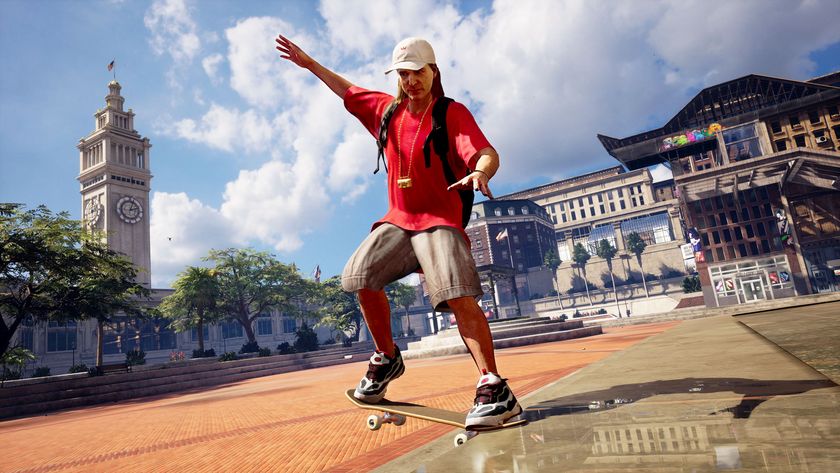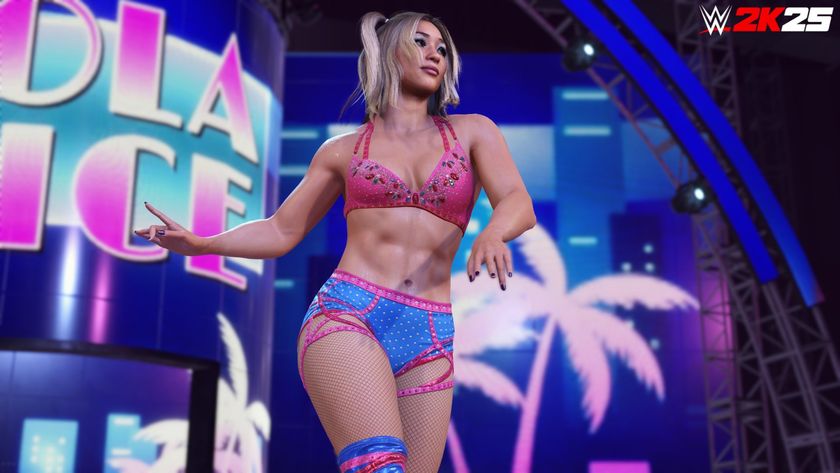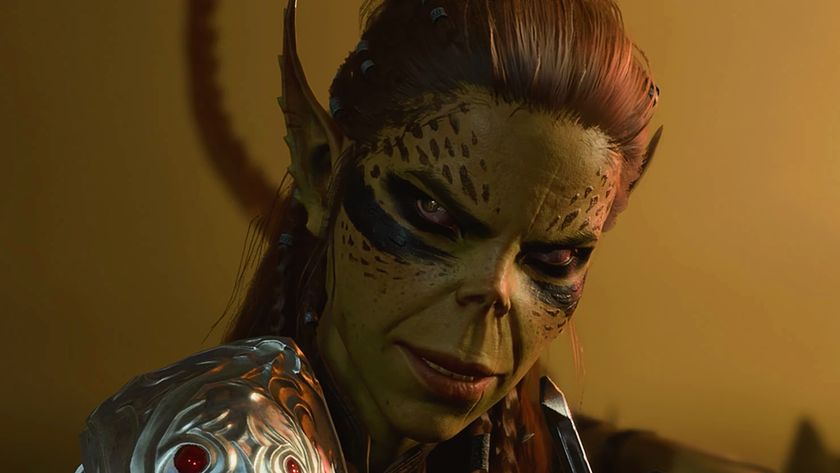9 things we learned behind the scenes on Madden 17
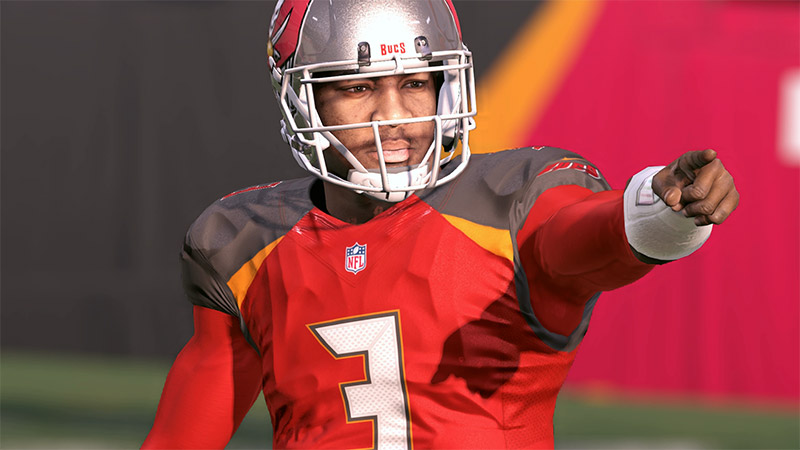
On the fifth floor of EA Tiburon, in a leafy Orlando suburb that could double for the sun-dappled set of a ‘save the trees’ environmental ad, there’s a meeting room in which one conjoined, rectangular bank of desks surrounds a gigantic ball pit. It’s the ultimate reminder that the entire point of videogames is to make you feel young at heart – and that whether you like your sports games seasoned to ‘sim,’ ‘arcade’, or a flavour somewhere in between, the most critical ingredient of all is a simple one: ‘fun’.
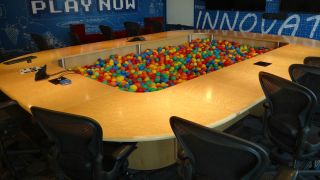
That’s the watchword underpinning every decision the team here makes. “Ball carrier mechanics are grounded in real NFL running back styles, but if my nine-year-old kid wants to pull off a 40-yard run with two spin moves, that can happen“ says executive producer Seann Graddy – and that upper-storey playpen is far from the only unexpected discovery made during my access-all-areas trip to Florida's own OC.
It’s the first time any British journalist has ever been allowed through the doors of the studio that’s helmed EA’s premier Gridiron effort since its 1994 formation. Below are nine other things that stood out from a day spent talking to the dev team and playing Madden 17, ahead of its late-August release.

EA Tiburon is an NFL treasure trove
Most Madden development is handled on the sixth floor of Tiburon. Here, just stepping out of the lifts is like an Innerspace-style voyage into the happiest reaches of Roger Goodell’s brain – all 32 teams adorn a mural which covers the lift doors and their surroundings. Turn right and there’s a large display showcasing player gloves belonging to every team; go left and a long corridor is bedecked with gleaming helmets, polished to perfection.

The floor’s main meeting room is similarly on-brand. Another full set of helmets is spread evenly around the room’s upper reaches, with one wall home to a laminated match ticket from every Super Bowl. In this little bubble, everything is football – it’s the fantasy workplace of anyone who’s every dreamed of building their own merchandise-packed manbasement or womancave.

Not that other tiers in the 128,000-square-foot building don’t offer some tempting treats, too. On NBA Live’s fourth floor, a meeting room contains a full-sized replica of the Larry O’Brien Championship Trophy trophy (naturally, it’s kept in a glass case for protection from inquisitive fingerprints). Especially comfortable is the ground floor cafe with pool table, basketball game, and mini arcade – where, intriguingly, the one American football recreation on offer is not a past Madden, but NFL Blitz 99. Those wanting a complete break from Gridiron can plump for PGA Tour Golf Challenge or Mortal Kombat II.

Special teams now throw up special moments
Enough snooping. You’re here because you want to know how Madden handles, and there’s one new element which impresses more than any other: special teams plays. For more than three decades, the series’ punts, extra points and field goals have felt routine to the point of being almost meaningless; if one team had possession within their opponent’s 25-yard line inside the final two minutes, there was almost zero point seeing the game through. No one, ever, missed a last-second field goal.
Mercifully, EA has finally done something about this. A three-click meter, like that found waaaaay back in Mega-Drive-era PGA Tour Golf, now dictates the power and accuracy of all kick-offs, punts, and attempts at the uprights. It’s punishing if you mistime your final click, and the challenge is compounded by the need to keep the left stick still while aiming between the posts (or wherever you want your punt to go). Only a vague sense of professionalism prevents me from punching a table after losing a tight Dolphins-Bears contest via a shanked 27-yarder, but what’s pivotal is that the miss was a result of my own inability, rather than a scripted game moment.
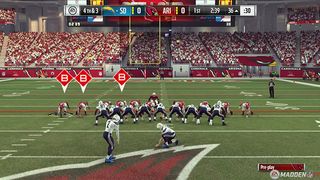
Across the line of scrimmage, players are genuinely able to block punts and kicks now. Before the snap you get to select from one of three blockers, and by timing your burst off the line to match the snap, then aiming your dive correctly, it’s possible to get your fingertips to a booted ball. In one afternoon, I smother two punts – the same number I’ve managed in 25 years prior.
The retooling of special teams also extends to new trick plays. One I’m shown mimics the field goal dummy and pass which transformed the 2014-15 NFC Championship game between Seattle and Green Bay, and there are some sneaky rushing fakes in there too. Essentially, EA has looked to follow in the real NFL’s footsteps by making every single play feel as meaningful as the last. It’s a welcome (and long overdue) change.
Sign up to the 12DOVE Newsletter
Weekly digests, tales from the communities you love, and more
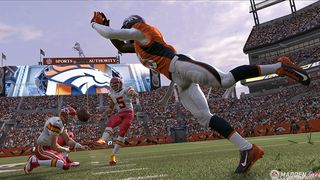
Its 2016 prospects look more Patriots than Titans
While the special teams improvements are the quickest to adapt to, more subtle tweaks leave a lasting impression as my day-long hands-on progresses. Take gap assignments: you can now place far more trust in defensive team-mates than in previous instalments as they seek to burst through openings in the offensive line, instead of senselessly engaging themselves in one-on-one battles with linemen twice their weight (and width). Running backs have a better sense of space, too; you can even enact an assist which shows the path on which to run as a play develops and linemen carve open gaps. (Hence Graddy’s earlier line about his eight-year-old personifying an NFL superstar.)
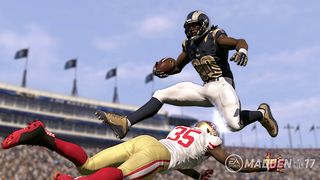
The overall effect is that it no longer feels like everyone is crowding the ball as soon as it’s handed off to a running back or put up in the air. Instead, there’s a refreshing sense that those not in the pigskin’s immediate vicinity are anticipating what might occur – a defensive end sealing the edge of the line in case the ball carrier runs his way, or a blitzing safety waiting an extra split second to attack the QB, rather than brainlessly charging into traffic. Those examples are defensive, but they have an effect on offensive play, too – you get an extra moment or two to read the more patient defense and react accordingly. Speed and power are still incredibly important, but intelligence is required too. That’s always a positive.
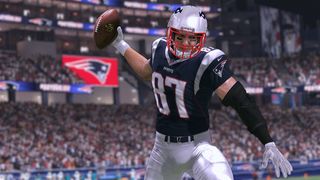
Franchise has (hopefully) been fixed this year
While the special teams improvements and tweaks to fundamentals represent a significant leap for authenticity, it’ll all be for nothing if you grow tired of Madden three weeks into the season. With that in mind, Tiburon has finally keyed in on franchise mode – once the series’ greatest strength, but considered its super-tender Achilles heel since 2013’s switch to PS4 and Xbox One.
My favourite addition is a ten-man practice squad for every team. It means you can attach and train hot prospects to your roster, without having to expose them to game time before they’re ready – although a risk-reward component comes from the fact that any other team can sign them to their active roster at any time. Exactly as occurs in reality.
If that’s an augmentation aimed squarely at the hardcore Maddenite, the ability to only play a match’s crucial moments skews towards its most casual players. Want to whip through seasons doing nothing more than throwing touchdowns, kicking field goals and trying to sack the opposition QB inside his own five-yard line? The option is now there. Definitely not my cup of tea (or, rather, super-sized bottle of Gatorade), but I can see how it would appeal to the NFL fan who can’t differentiate a right guard from a shin guard.
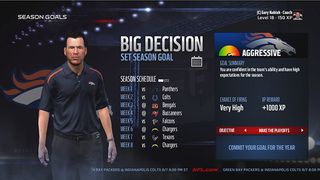
‘Big decisions’ are also an attempt to make franchise feel like an organic, three-dimensional experience. Before particular games you’ll be prompted to decide on specific aspects of your team, such as whether to rush a key player back from injury before he’s 100 per cent healthy. It being a videogame, the temptation will always be to roll with the better guy, but here’s the neat thing: if you stick with the back-up in this scenario, he’ll get an XP boost to signify the faith you’ve shown in him. Commentators also analyse your call, but it’s those tangible effects on gameplay which will define whether the feature is a success.
Other franchise tweaks include a score ticker which updates you on events around the league, full editing for any player at any time, detailed feedback on player regression (which, given the enormous salaries of veteran players, is just as crucial as monitoring prospect growth), and a leaner, faster means of cutting players and bidding for free agents in the off-season. Let’s join in prayer to the footballing gods (yes, I do mean Larry Csonka and Dan Marino) that franchise mode delivers on its abundant promise.
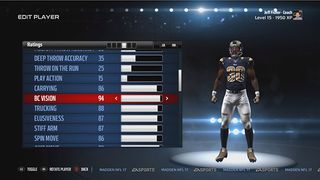
Brian Murray is a genius
Whatever your view of presentation in Madden – on a selfish level, I’d love Tiburon to one day implement the ESPN overlays which made its later NCAA games so great – there can be no doubt it takes this aspect of the game incredibly seriously. The guy in charge of it all since 2014 spent seven years as NFL Films’ senior cinematographer, and was for a time director of photography for legendary HBO football show Hard Knocks. Oh, and he’s snared *eight* Emmys. His name is Brian Murray, and – I’ll put this in the most scientific way possible – he knows his shit.
I spend 45 minutes with Murray and colleague Mike Hoag, and what’s clear is that both live for the idea of making Madden feel exactly like a TV broadcast. I’m given a demo of the team’s sophisticated handheld camera – which can mo-cap in real-time, from any angle, as if out on a real field of play – and shown a chart mapping all 40 procedural cameras in the game. These adhere to an incredibly detailed process whereby six separate cameras can track any single player, using an on-field zone map, the instant a play is blown dead. “We built logic that says, if this guy gets up in zone 1, then [cameras] 25, 36, 16, 7, 37 and 14 will all cover him,” explains Murray.
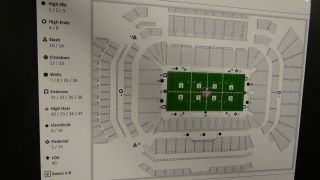
It’s these moments between plays which drive home the sense that what you’re experiencing (and influencing) is real. They’re the points in a TV broadcast where players mug to the camera, get in one another’s faces, are bellowed at by their coaches or gawp at iPads to see where they’re going wrong, and have been a big focus for Murray ahead of Madden 17. You and I call them cut-scenes; he and Hoag term them 'scriptables', because their ambition is to create a seamlessness where you don’t know what’s scripted, and what’s organic.
“Our thought process is, ‘how do we script cameras so that they’re not only indicative of what you would see in a broadcast, but also accurate to cinema, and don’t create an immersion breaker between D-cam (the handheld camera mentioned above and pictured below) and the procedural camera system?” says Murray. “So we created this really nice camera language where now you can’t tell between the two.”
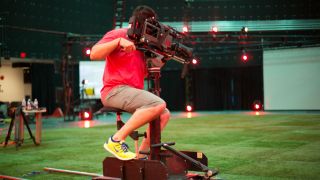
He’s not wrong. In a game as the Seahawks against the 49ers, I repeatedly find myself smiling at the antics of cornerback Richard Sherman. At various points between plays he shares helmet-to-helmet smacktalk with opponents, bumps shoulders and elbows with team mates, and leaves the field dancing around after forcing a San Fran three-and-out. But there are no obvious jump-cuts before or after these scenes – everything is stitched together naturally. And with more than 900 scriptables included this year – I even see punter Jon Ryan celebrating a kick downed on the Niners’ three-yard-line – the repetition of scenes should be significantly reduced.
Presentation isn’t only about visuals though. Murray delights in explaining how vital it is to have new commentators Brandon Gaudin and Charles Davis on board. While previous announcers Jim Nantz and Phil Simms’ lines were recorded individually then stitched together, this year the team set out to ensure everything was done in tandem.
“Having them be in-house, together, for everything we record is a unique thing to do – you can take an entire story back and forth,” explains Murray. “You can drop them right into the analysis of a play, and that’s something we’ve never done before. They’re talking to one another, rather than acting like they’re talking to someone who isn’t actually there.”
This isn’t a static change, either. Gaudin and Davis are committed to recording two hours of additional commentary every week after release, which will be seamlessly integrated across all modes – whereas previous instalments of Madden saw the game endlessly recycle 40 hours worth of Nantz and Simms until you reached for the mute button. “We can spot a weak point and then, with the next recording update, immediately beef that up,” explains Murray.
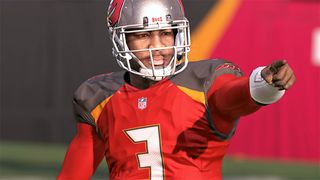
Graddy outlines one specific way this will work: “Let’s say you’re playing franchise as Tampa, and Jameis Winston does his QB runout onto the field at the start of the game. The commentators talk about his rookie year. There’s maybe four variations of what the commentators might say, but after a while you’ve heard all those a number of times. Now we can freshen those up, using the live update system.”
300 draft picks have been scanned
Whisper it, but for a number of Madden casuals (and FIFA players, for that matter) realism doesn’t come down to offensive line stunts and the ability to implement a true 0 Flood Flank Fip R-34 Flash A Shark play. Instead, it’s about something much more simple: slinging deep passes with players who look like their real life counterparts. Producing a game which sates both sets of fans is one of the dev team’s toughest challenges, but in terms of likenesses they’ve been helped for Madden 17 by being given greater access to new NFL players than ever before.
“This year we went to the scouting combine, where the NFL says, ‘these are the top 300 players that everyone should care about.’ We went and we scanned every last one of them,” says Hoag – a former college lineman who’s now a senior member of Madden’s presentation team. “They’re ready to go in this year’s game. Some of those players are very awe-stricken; everyone growing up now wants to be in Madden, so this is a cool thing for them. It’s their first taste of ‘holy crap, this is real! I’m going to be in the NFL!’’’
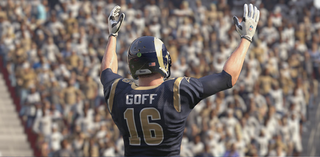
One rookie got extra attention to detail because he’s in the featurette which plays when you first load up the game, directed by Hoag. “There’s a whole load more work that’s been done with Jared Goff, right down to recording his voice. That was unique,” says Murray.
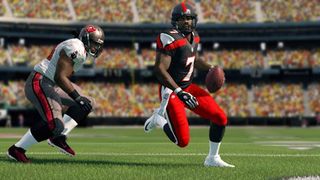
Pro players all heart videogame Michael Vick
Part of my time at Tiburon involves playing Madden 17 with Miami running back Jay Ajayi and Jacksonville receiver Allen Hurns, and talking it with pro-footballer-turned-developer Clint Oldenburg, who joined Tiburon in 2012 after spells with six NFL teams. And all use the same two words in connection with their love affair with Madden over the years: “Michael Vick.”
“2007 Mike Vick would have to be the most unstoppable Madden player ever,” says Ajayi. “That was when the game was set up so quarterbacks could do all the moves, you know. Everyone wanted to use the Falcons because he was so good on the game.” “I would have to say Michael Vick,” echoes Hurns when I ask for his all-time favourite Madden player. “When he was on it with the Falcons I would always play as him, no matter what. There always times where every other guy you were playing with wanted to be Vick as well, so you ended up flipping a coin to see who could have him.”
Oldenburg, however, often had to concede use of Vick to his sibling – something which nearly led to full-scale family rifts on multiple occasions. “My brother usually took the Falcons, with Vick on them. We would end up breaking controllers by throwing them across the room, and there were multiple occasions where the person losing the Super Bowl in our shared franchise would literally go and unplug the console before the game ended to get it reset. That would always end in a little brawl!”
Oldenburg’s all-time Madden hero, then? “Sean Taylor. I was a 49ers fan, but I always had to have him, and being able to play on the Redskins [after Taylor was tragically killed in 2007] and to see his locker, and hear his team-mates’ stories about him, was truly special. He was a guy I idolised as a kid.”
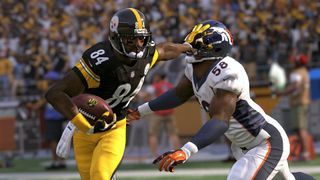
There’s a three year plan for future Maddens
Ready those clickbaity ‘Madden 19 confirmed!!’ headlines, folks: the team is already working on ideas for not only next year’s game, but the one after that. (I’m joking about the headlines. You can do better.)
“There’s always an advance team working on next year’s game,” reveals Graddy. “Sometimes it’s towards a very controlled, specific feature – the wide-receiver vs defensive back interactions we implemented in 16 was actually a multi-year feature, where we initially had a small team crafting the ideas, working on the AI, building the catch mechanic, and then put a much bigger team on it to finish it. The size of the team varies dependent on what we’re trying to accomplish. So we do have an advance team working on Madden 18 now, for sure.”
“Presentation wise, we always have a roughed out three-year plan,” says Murray. “We’re always thinking about the high-level goals we want to get to over the next three years. We already have our rough priority list for Madden 18, and the creative heads meet weekly to talk over what we’re looking for next year.”
Oldenburg says that his ideas, as an ex-pro, stretch even further ahead. “I am a very detail-driven guy, so I break our game down in details that very few others will, because I came from a background of watching game film or practice performances every day. I do the same thing with the game: I’ll watch a play over and over and over, and see three things you wouldn’t see, and go fix them. I have ideas that will last us ten years! There are always more things I want to do.”
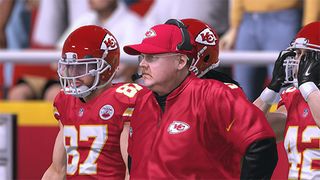
Coaches get funny about their likenesses
A hilarious closing note from my interviews with Hoag and Murray: coaches can be just as particular about their in-game likenesses as players. This was the dev team’s first year at the scouting combine to scan players, but it regularly attends March’s league-wide coaches' meeting, where the league’s finest minds gather to discuss rule changes and (in 31 cases) chew over the previous season’s injustices.
“We’re kind of used to that process,” says Hoag. “The luxury we have is that most hirings and firings happen right after the season, and we’re invited to the coaches' meeting every year. We scan new guys who have been hired, and re-scan guys who have aged a little bit, or changed teams.”
“Or lost weight,” adds Murray with a smile, possibly referring to then-Jets coach Rex Ryan’s much-discussed lap band surgery in 2012.
“We also get notes from coaches,” continues Murray. “They might say they’re not keen on their current likeness, and we’ll try to accommodate that. No-one asked for that this year, though!”
Madden 17 is out on PS4, PS3, Xbox One and Xbox 360 on 23 August.
I'm GamesRadar's sports editor, and obsessed with NFL, WWE, MLB, AEW, and occasionally things that don't have a three-letter acronym – such as Chvrches, Bill Bryson, and Streets Of Rage 4. (All the Streets Of Rage games, actually.) Even after three decades I still have a soft spot for Euro Boss on the Amstrad CPC 464+.
Most Popular






